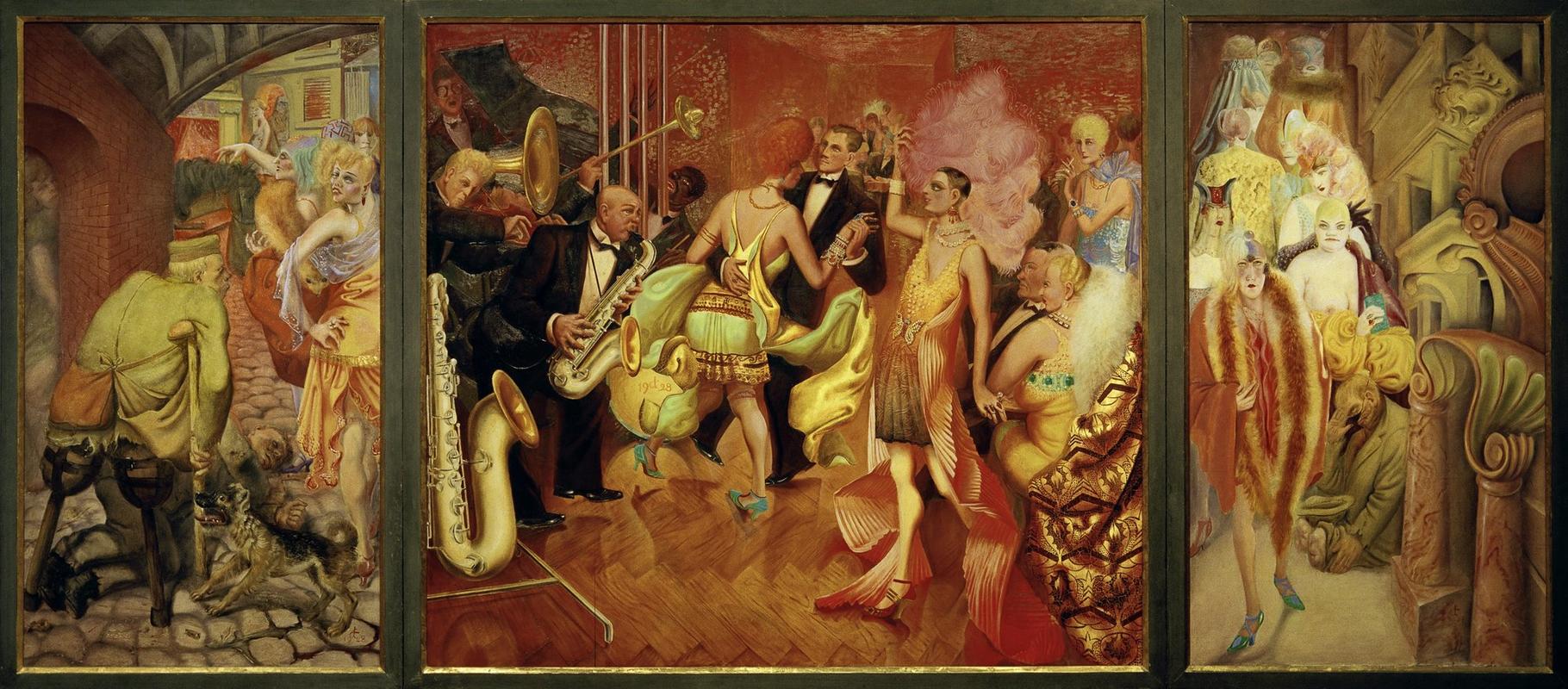More about Metropolis
- All
- Info
- Shop

Contributor
Otto Dix painted what he knew. And he knew all too well what it felt like to be on the front lines.
World War I was wild. You should know this even if you didn’t pay attention in your 10th grade World History class. As the first war involving as many countries as it did, everyone wanted to show their patriotism for their respective homes and fight for their land. Otto Dix, native of Germany, was one of these people. He excelled as a soldier, fighting as a machine gunner at the Battle of Somme where he murked his enemies like a round of Fortnite. But he soon became disillusioned with the war. Battling on the frontlines and seeing the atrocities first-hand will do that to anyone. He wasn’t alone. And after a while, soldiers began using art to cope with what they’ve been through and show the rest of the world what war really looked like. Ernst Ludwig Kirchner was another German soldier turned artist born out of the ugliness of the war.
At a certain point, there were so many artists popping up making art about the war that it became a whole damn movement within the art world. And it’s name was Dada. Let me stop you before you even start. No, it wasn’t named by a baby trying to call out to their pops. Dada was all about being a troll. It didn’t exist to glorify or enhance anything, it existed to mock everything. It also wasn’t confined to a style, either. Dada was conveyed across photography, painting, poetry, collage, and sculpture.
All of that is how you get a painting like Metropolis, or Gross Stadt if ya nasty.
Metropolis is a study on post World War I life in Germany. There’s so much to unpack. The painting is split into three parts. The middle has everything you’ve ever thought about the roaring ‘20s all rolled together. There’s ragtime jazz with some burlesque dancers. Everyone’s having a grand ol’ time! But the sides of the painting tell a different type of story. To the left you’ve got maimed soldiers passed out in the streets with nowhere else to go, an image that still resonates today. And to the right, we see a crowded hallway of prostitutes, likely present to serve the well-off individuals in the middle scene.
Metropolis is a triptych, which is why it’s divided into three sections. A triptych can be folded into itself kind of like a pamphlet, which makes it a lot easier to transport than a regular painting. But there are some craft reasons to use the triptych layout as well. In relation to Metropolis, it might be the strongest aspect of the piece. Each scene is framed individually, ultimately isolating them from the rest of the frames. But this also makes them stand out more. And you pay attention to each individual scene more than you might have if they weren’t broken up the way they are. The triptych format allowed Dix to create a metaphor for the state of society at the time. The framed aspect of the painting can be seen as barriers confining different groups of society together. The affluent have fun with music and bliss while the veterans and prostitutes, literally on the outskirts of society, are ignored and used. This is definitely one of those paintings that’s so layered in it’s intent and execution, that if you ever saw it in real life, it would be hard not to rub your chin and ponder like Ferris Bueller and his friends when they skipped school that one time.
Sources
- Gray, Wendy. The ‘Degenerate’ World of Otto Dix.”. Daily Art. August 3, 2017. http://www.dailyartmagazine.com/degenerate-world-otto-dix/
- Jones, Jonathon. The First World War in German Art: Otto Dix’s First-Hand Visions of Horror.” The Gaurdian. May 14, 2014. https://www.theguardian.com/artanddesign/2014/may/14/first-world-war-ge…\
- South, Helen. What is a Triptych in the Art World?” ThoughtCo. January 30, 2019. https://www.thoughtco.com/triptych-drawing-definition-1123079
- The Art Story. Dada. Accessed March 23, 2019. https://www.theartstory.org/movement-dada.htm
Featured Content
Here is what Wikipedia says about Metropolis (Dix)
Metropolis (German: Großstadt) is a triptych painting by the German artist Otto Dix, executed between 1927 and 1928. The painting depicts three nighttime city scenes from the Weimar Republic. The painting belongs to the Kunstmuseum Stuttgart since it was bought from the artist's estate in 1972.
Check out the full Wikipedia article about Metropolis (Dix)















Amazing colors, awesome composition, I want this!